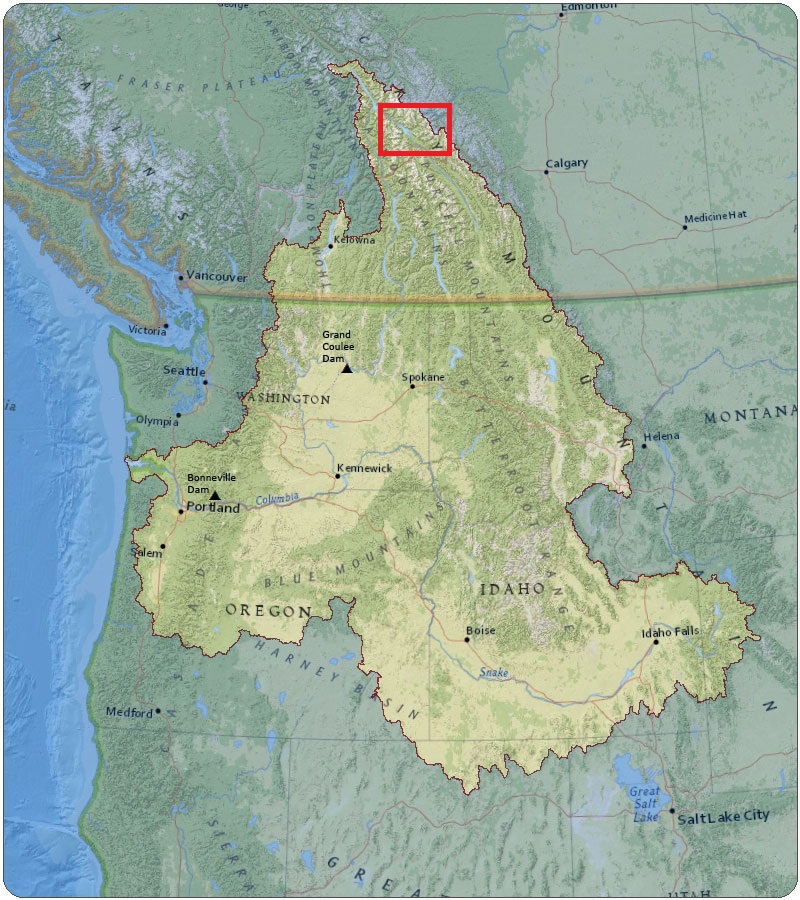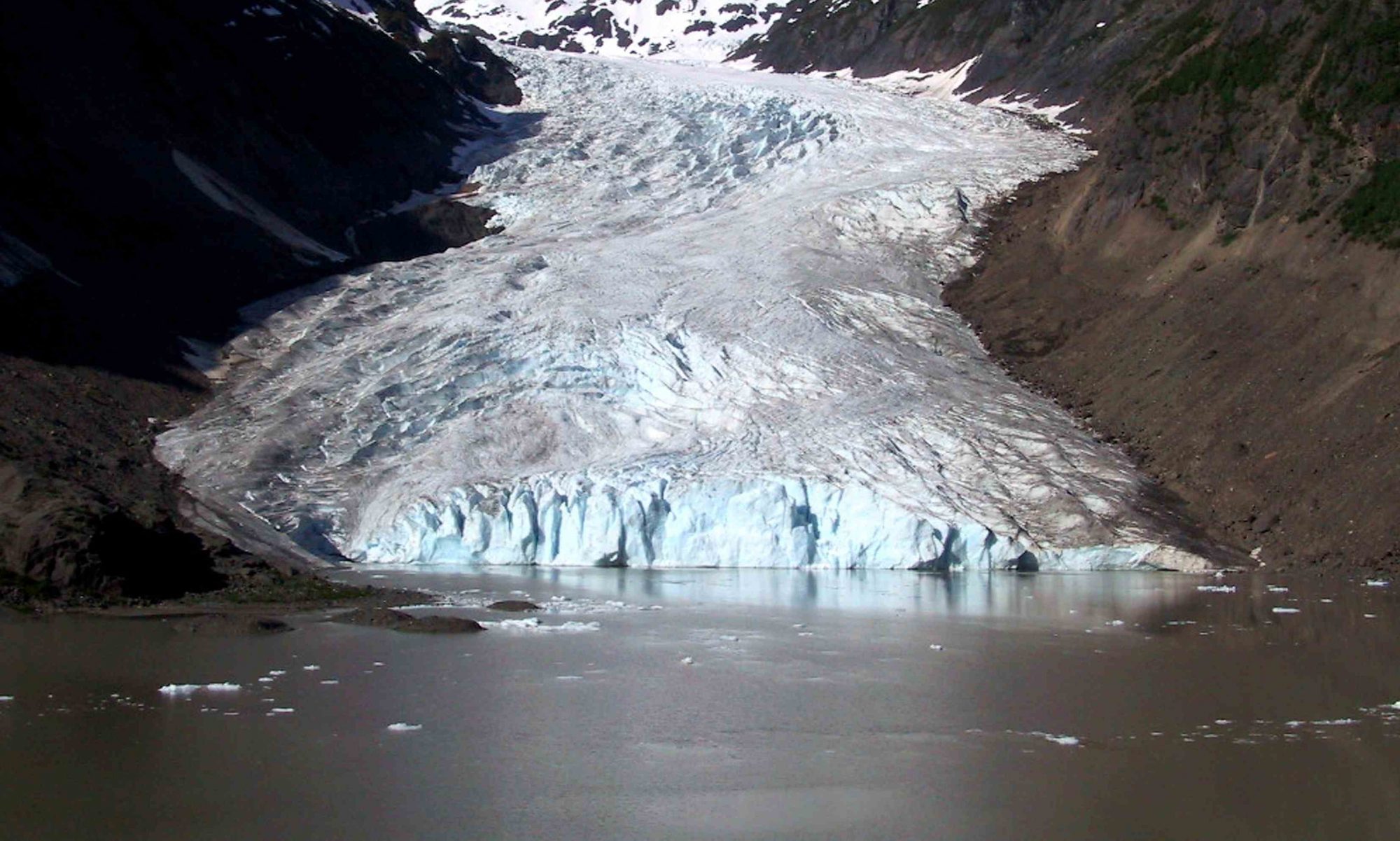
The majority of Canada’s river basins are affected by seasonal glacial melt that alters the sediment transport and temperature in the channels. However, within the past few centuries, the global climate has been warming at an unprecedented rate and is expected to worsen over the next few decades. According to Dr. Michael Zemp of the World Glacial Monitoring Service, glacial ice thickness is decreasing at a rate of 0.5 to 1 meter a year. This number is about two to three times above the average of the previous century (Kirby, 2015). As glaciers disappear, hydrologic regimes will change, which will impact the variety of flora and fauna currently living in the river channel. In this project, we will focus on the impacts of glacial melt in a Canadian region of the Columbia River Basin (denoted by the red square in the image above).
Through calculation of the Maximum Weekly Average Temperature (MWAT) for current climatic and environmental conditions and predicted changes due to climate change, this report provides a prediction for fish species composition in the study area for the 2080s. Current MWAT and predicted MWAT was calculated for 32 points within the study area where 12 fish species were found to inhabit one or more of these points. Out of the 32 points four species were found in multiple locations within the study area: Bull trout (BT), Rainbow trout (RB), Kokanee (KO) and Slimy sculpin (CCG). Further analysis of these four species through the results of the MWAT calculations found that suitable conditions for BT will decrease by about 76%, RB will decrease by about 30%, KO will decrease by about 33% and CCG by about 56%. These results highlight major concerns for numerous fish species in the Columbia River basin given predicted climate change. As well, the methods implemented in this study define the steps that could be taken to model larger data sets within the basin to determine better predictions for future species composition.
